Poison Pie
A common poisonous mushroom that is best identified by its strong radish like smell, greasy cap, very wide umbo and dark droplets or brown stains from the droplets on the gills.
| Mushroom Type | |
| Common Names | Poison Pie (EN), Crwst Gwenwynig (CY), Włośnianka Rosista (PL), Zsemleszínű Fakógomba (HU) |
| Scientific Name | Heboloma crustuliniforme |
| Synonyms | Hebeloma nudipes |
| Season Start | Jul |
| Season End | Nov |
| Average Mushroom height (CM) | 3-11 |
| Average Cap width (CM) | 3-8 |
Cap
3-8 cm. Off white to pale tan, usually more brown towards the centre. The cap starts convex but develops a wide umbo. The cap margin can be uneven or lobed and in-rolled until quite mature. The cap feels sticky or greasy, especially in damp conditions.
Gills
Starting off white turning to pale grey/brown but retaining a white edge. Dark droplets can form on the gills when conditions are damp, once dry these will leave brown spots. Free of the stem and quite crowded.
Habitat
Mycorrhizal with both broadleaf and coniferous trees. Usually in small groups but can be found singly, mostly under birch.
Possible Confusion
Bitter Posionpie (Hebeloma sinapizans) is similar but larger and lacking the droplets or brown spots on the edge of the gills. It prefers calcareous soil.
Spore Print
Spore print is rust brown. Spores are almond shaped (amygdaliform), finely covered with warts (verrucose), pale yellow.
Taste / Smell
Tastes bitter. Smells of radish.
Frequency
Common and widespread.
Other Facts
A fairly large genus of mushrooms belonging to the Hymenogastraceae family. Most Hebelomas have a radish or fruity/sweet smell, greasy or slimy caps and have grey/brown spores. Hebeloma comes from the ancient Greek language, ‘hebe’ meaning youth and ‘loma’ meaning veil or fringe and is a reference to the short lasting veil covering the gills on very young mushrooms. All Hebelomas are ectomycorrhizal and require trees to grow with. The Hymenogastraceae family used to contain only a handful of mushrooms but after molecular analysis, many genera have been added, including Hebeloma.

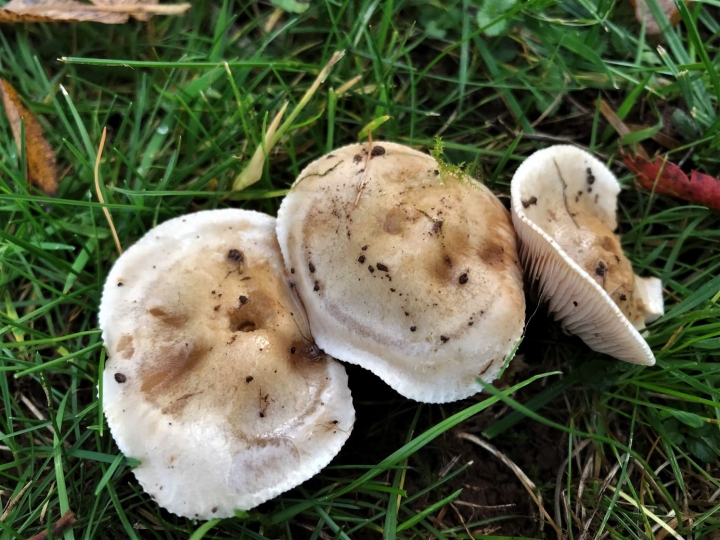
















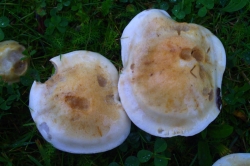
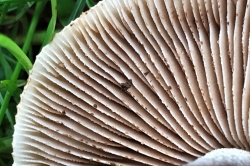
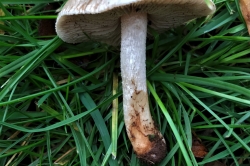
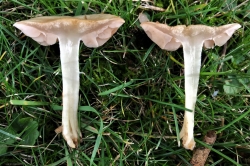
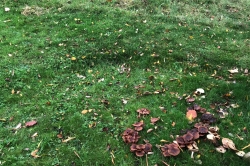





COMMENTS